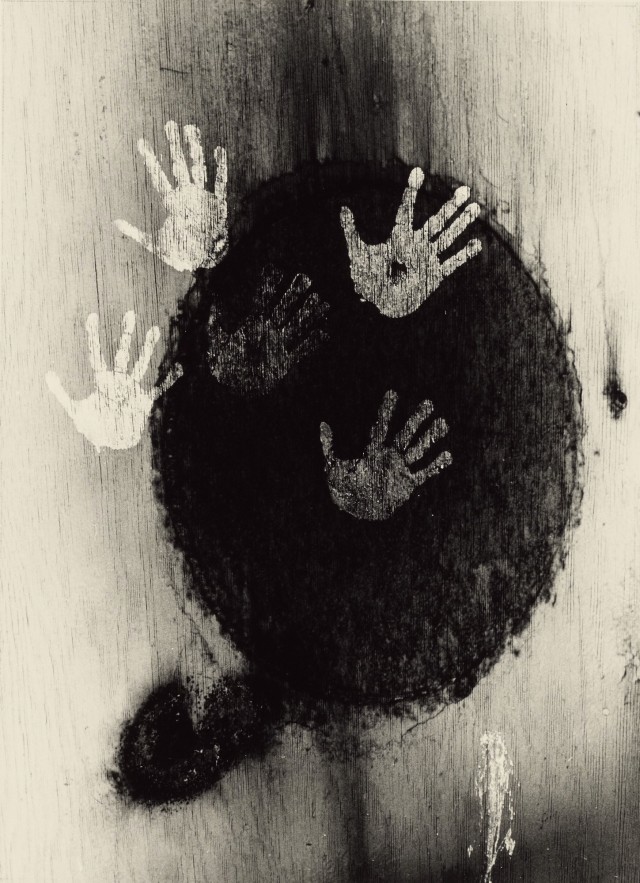
Minor White, “Untitled (composite print)” (1973). Gelatin silver print. Reproduced with permission of the Minor White Archive, Princeton University Art Museum. (© Trustees of Princeton University. Credit: Daniel Greenberg and Susan Steinhauser.)
LOS ANGELES — Minor White’s photographs offer a portrait of a life lived in collaboration with the natural world, other people, and the great beyond. This collection of crisp photographs make up the retrospective Manifestations of the Spirit. It is a carefully staggered catalogue of White’s life’s work, weaving together chronological output with the photographer’s inner spiritual quest.
The exhibition begins with a tour through White’s “early career” (1937–45), starting with his departure in 1937 from the Midwestern city of Minneapolis. Relocating to Portland, Oregon, White dove into his practice, exhibiting an aptitude for a highly realist and naturalistic style of photography. It’s recognizable in “Cabbage Hill, Oregon (Grande Ronde Valley),” 1941, a gelatin silver print capturing converging angles that creates a mystical, non-focal point through circular barbed wires and a layering of wooden planks. The eye continues wandering across the photograph, unsure of where to land, yet knowing that it must keep going.
It’s strange, however, that White’s exhibition began with the “official start” of his artist career; there is no backstory about his young adult life or early spiritual experiences. The wall text touches on White’s gay identity which was, at the time, not something he disclosed publicly. Obvious queer undertones could be read into his 1948 photograph “Tom Murphy, San Francisco” (1948), of an angular, nude, muscular man, his head tilted to the side, gaze aimed down, and arms crossed over each other. White was a soldier in World War II, and queer long before ideas like gay marriage entered the public consciousness. The men in his photographs appear in anguish, using the body to express repression and desire. White is fascinated by this mysterious, almost deity-like male form.
Read the full story on Hyperallergic: http://hyperallergic.com/138650/minor-whites-vulnerability/



